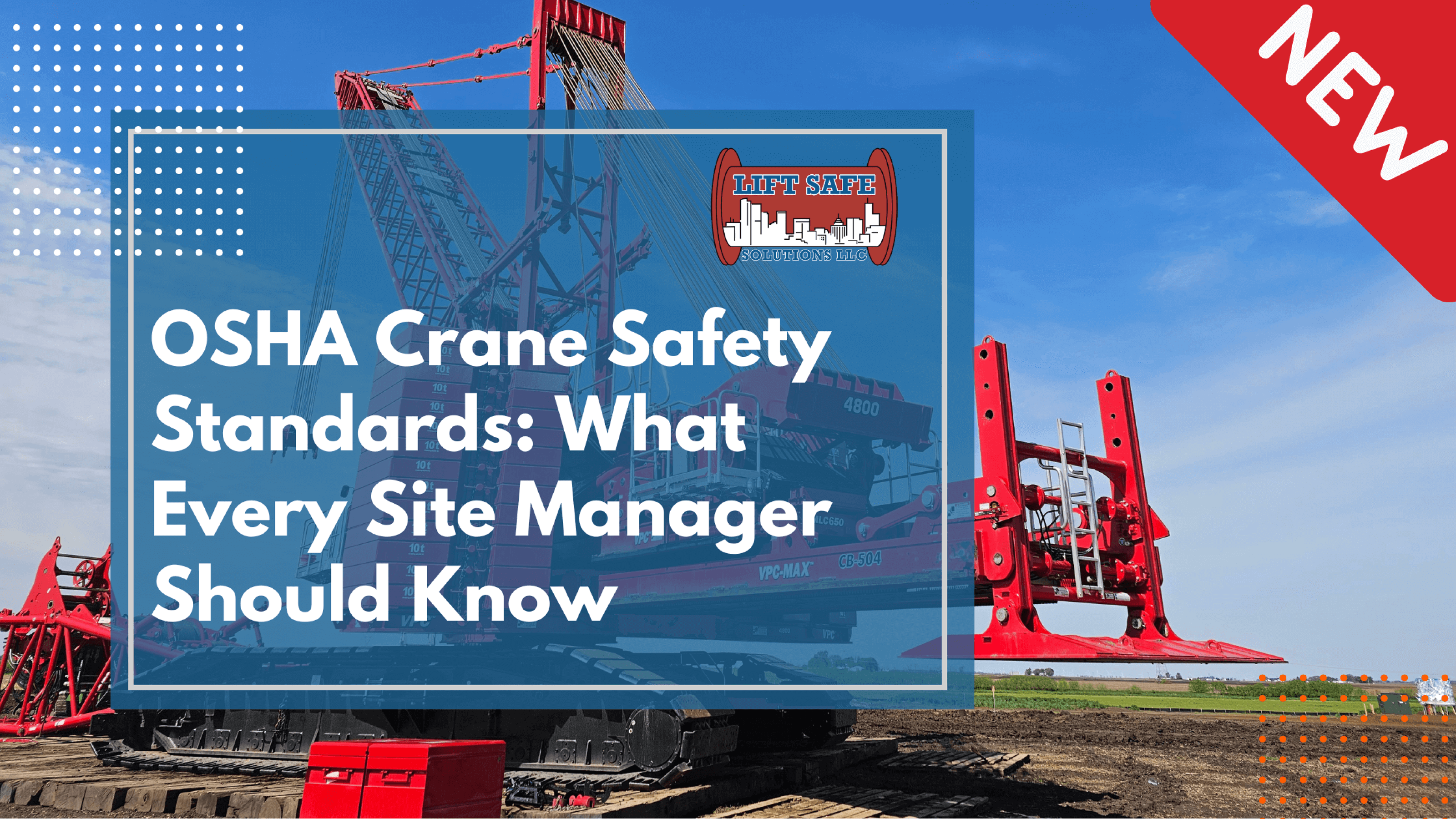Crane operations are at the heart of many construction projects, but they also come with significant safety risks. According to OSHA (Occupational Safety and Health Administration), crane accidents can lead to serious injuries, property damage, and costly delays. For site managers, understanding OSHA crane safety standards isn’t just about compliance — it’s about creating a safer, more efficient job site.
This guide covers everything you need to know about crane compliance so you can keep your crew safe and your projects running smoothly.
Why OSHA Crane Safety Standards Matter
Crane-related incidents are often preventable when proper safety protocols are followed. OSHA introduced comprehensive crane safety standards to reduce risks like:
- Crane tip-overs and collapses
- Contact with power lines
- Equipment failures due to poor maintenance
- Improper lifting practices
For site managers, adhering to these standards ensures:
- Legal Compliance: Avoiding fines and penalties
- Worksite Safety: Protecting your crew and equipment
- Operational Efficiency: Reducing downtime caused by accidents
- Reputation Management: Demonstrating commitment to safety practices
Key OSHA Crane Safety Requirements
To maintain crane compliance, site managers must stay up to date with OSHA’s regulations. Here are the most critical elements:
-
Operator Certification
OSHA requires that all crane operators be properly certified through accredited programs. This ensures operators have the necessary knowledge and skills to handle equipment safely.
-
Regular Inspections
Daily inspections by a qualified person are mandatory before each shift. More thorough monthly and annual inspections are required to keep cranes in top condition.
-
Load Limits and Charts
Cranes must never exceed their rated capacity. Load charts should be clearly visible in the operator’s cabin to prevent overloading accidents.
-
Safe Setups and Clear Work Zones
Cranes must be set up on stable ground, away from hazards such as overhead power lines. A designated signal person should guide all lifts when necessary.
-
Training and Communication
Workers involved in crane operations must be trained in proper procedures, hand signals, and emergency response actions.
Common Compliance Challenges
Even experienced site managers face challenges in maintaining crane compliance, including:
- Scheduling regular training sessions for operators
- Keeping up with updated OSHA standards
- Managing multiple subcontractors with different safety protocols
- Documenting inspections and certifications
Failing to address these areas can result in OSHA violations, expensive fines, and, most importantly, increased risk for workers.
How Lift Safe Solutions Helps You Stay Compliant
At Lift Safe Solutions, we specialize in crane safety and OSHA crane safety standards compliance. Our services include:
- On-site safety audits to identify compliance gaps
- Certified crane operator training programs
- Assistance with documentation and record-keeping
- Real-world solutions to improve safety and efficiency
With Lift Safe Solutions, site managers gain peace of mind knowing their projects meet OSHA requirements while minimizing risks and downtime.
Final Thoughts
Understanding OSHA crane safety standards is essential for every site manager who wants to maintain crane compliance and protect workers. From proper training to regular inspections, staying proactive about safety pays off in fewer accidents, smoother operations, and reduced liability.
For expert support in crane safety training, compliance, and accident prevention, Lift Safe Solutions is here to help.
Contact Lift Safe Solutions today to ensure your job site meets the highest safety standards.
